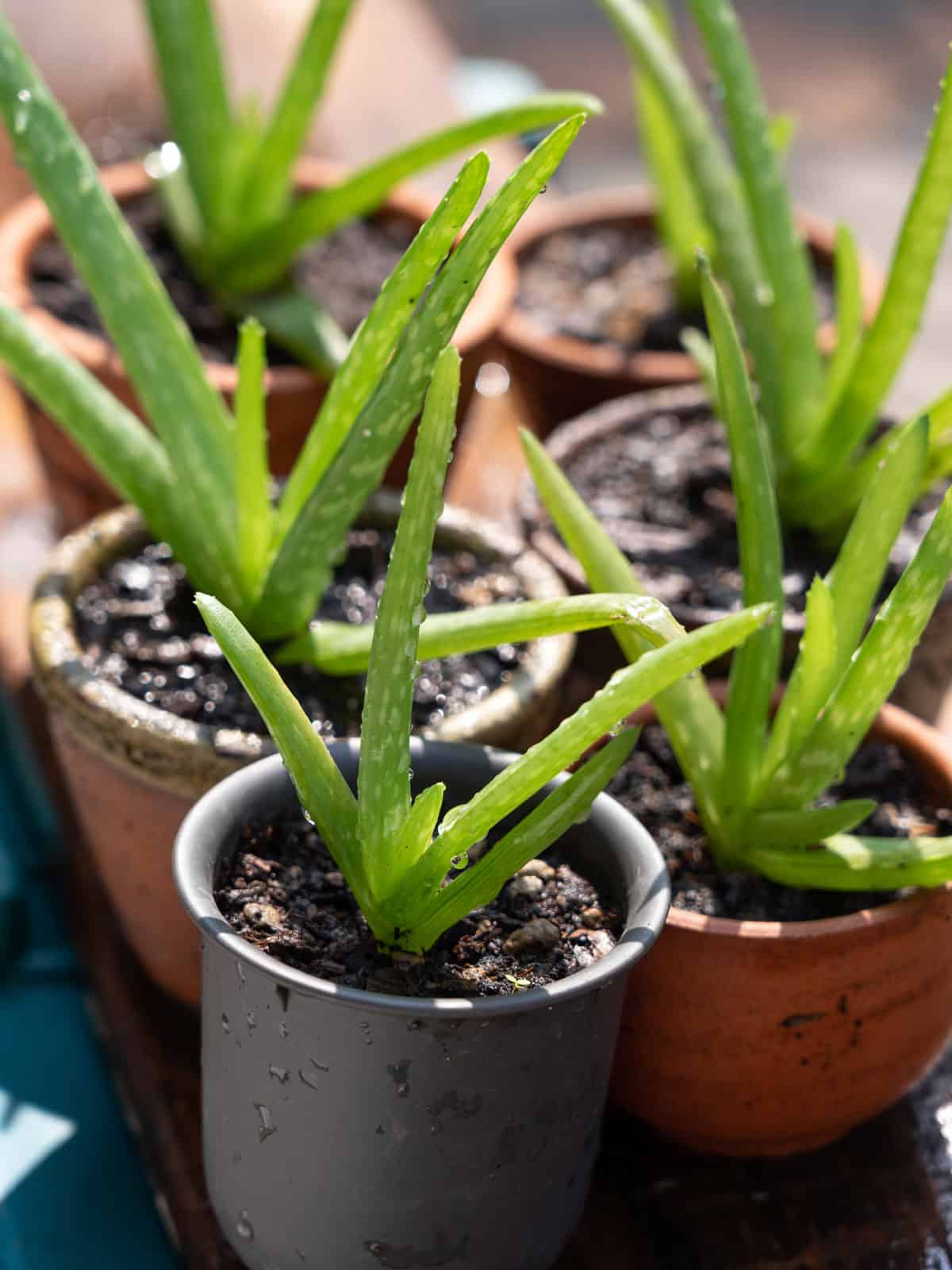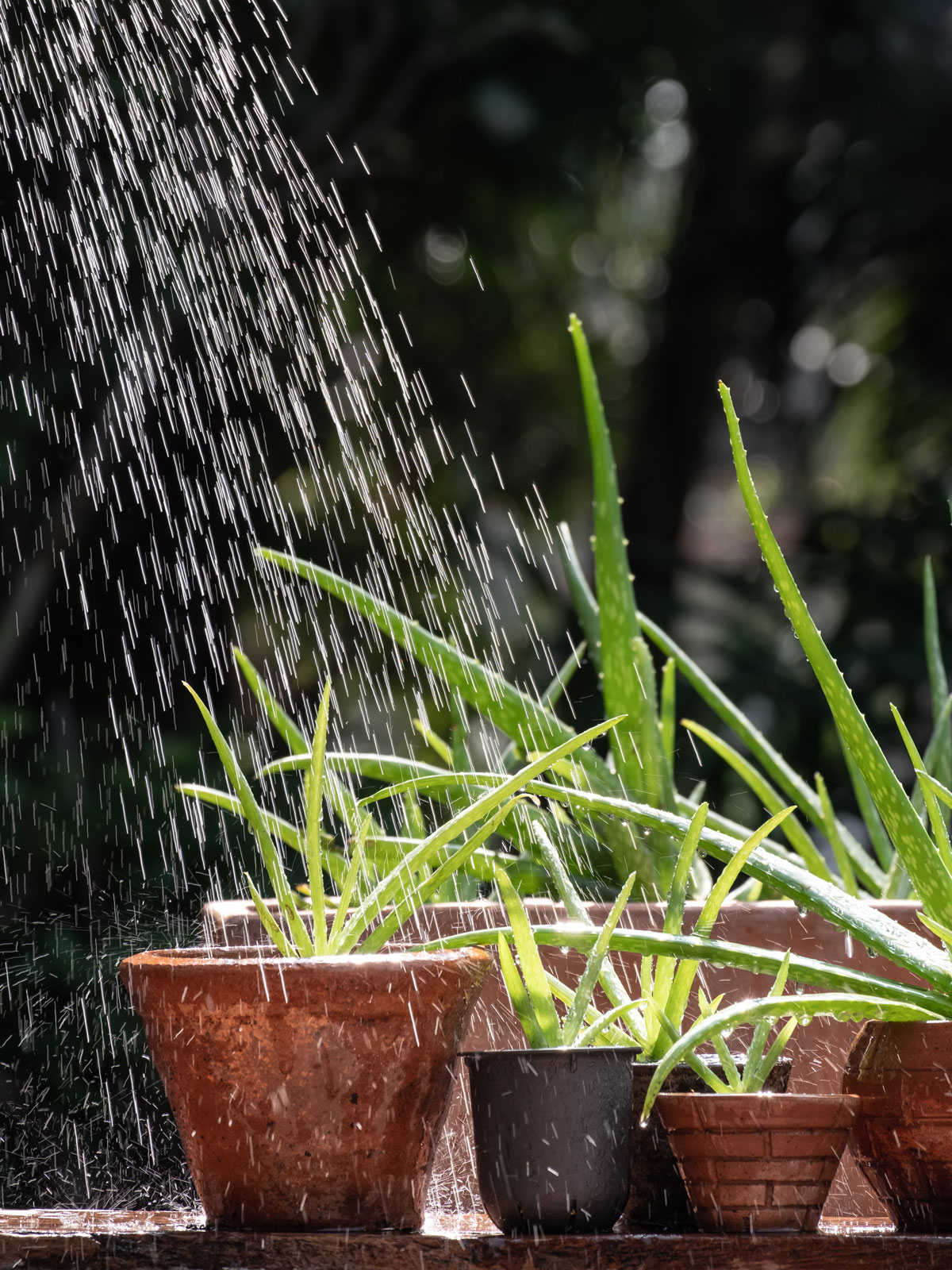Overwatering is one of the most common pitfalls Aloe Vera owners can encounter. It can lead to root rot, a compromised plant, and, ultimately, a sad ending for your plant.
Understanding the balance of moisture your Aloe Vera needs is key to maintaining its health.

Keeping your Aloe Vera hydrated without going overboard might seem tricky, but with a few simple tips, you can easily avoid the dangers of overwatering. And we'll share just that in a few!
Overwatering and How It Affects Your Aloe Vera
When your aloe vera receives more water than it can use, the excess moisture can lead to several problems. Here's what happens:
Root Rot
Aloe Vera prefers dry conditions, and too much water can cause the roots to rot. Rotted roots are less effective at absorbing nutrients and can eventually lead to plant death.
Look for brown-black discoloration and a soggy texture to spot this issue.
Yellowing Leaves
Overwatering can also cause your Aloe Vera's leaves to turn yellow and wilted. This is a sign that the water displaces air in the soil, suffocating the roots and leading to tissue breakdown in the leaves.
Some other effects of overwatering include:
- Soft and mushy base or leaves
- Leaves that are turning yellow or brown
- Stunted growth or wilting leaves
- Mold or fungus on the soil surface
Simple Tips to Prevent Overwatering Your Aloe Vera for Healthy Growth

Ensuring the right amount of water and environmental conditions are key to your plant's health. Follow these simple steps to keep your Aloe Vera thriving with the right hydration.
1. Know How Much Water Aloe Vera Needs
Your Aloe Vera plant thrives on minimal water. It's a succulent, meaning it retains water in its leaves, so frequent watering is unnecessary.
During the warmer months, watering once every two to three weeks is adequate; during the cooler months, reduce the frequency to once a month or less.
2. Use the Right Soil Mix for Good Drainage
The type of soil is critical for proper water management. Aloe Vera requires a well-draining soil mix, which often includes a blend of potting soil, coarse sand, and perlite or pumice.
This helps to prevent water from pooling at the roots, which can cause rot.
3. Learn the 'Soak and Dry' Method
When you water your Aloe Vera, thoroughly soak the soil until water runs out of the drainage holes, then allow the soil to completely dry out before watering again.
This method encourages a strong, healthy root system.
4. Understand the Role of Pots and Drainage
Pot material matters—terracotta or clay pots let the soil dry out more quickly than plastic ones.
Your pot must have drainage holes at the bottom to allow excess water to escape. This helps prevent water from accumulating at the bottom and safeguards against root rot.
5. Pay Attention to Your Plant's Environment
Aloe Vera prefers a sunny place in your home. A spot with indirect, bright light is ideal.
Too much shade can result in excess moisture retention in the soil, leading to overwatering issues. If your plant is paler than usual, it may need more light.
6. Monitor and Adjust Your Watering Schedule as Needed
Keep a keen eye on your Aloe Vera and watch for signs of both underwatering (shriveled or flat leaves) and overwatering (soft and mushy leaves).
Adjust your watering schedule based on the plant's appearance and seasonal needs; less in winter, more in summer. But always remember: when in doubt, it's better to underwater than to overwater.
Common Mistakes to Avoid in Watering Aloe Vera
Watering your aloe vera plant is not complex, but it does require attentiveness to avoid common pitfalls. Here are mistakes to steer clear of:
- Frequent Watering: As we said, Aloe veras thrive on less water than other houseplants. So, resist the urge to water them too often.
- Lack of Drainage: Always use a pot with adequate drainage holes. Pots without proper drainage can trap water, leading to root rot.
- Ignoring the Weather: The amount of water your aloe vera needs can change with the seasons. Again, water less during the colder, less sunny months when the plant's growth slows down.
- Watering on a Schedule: Check the soil's moisture instead of fixed intervals. Water only when the top inch of the soil is dry to touch.
Final Thoughts
Maintaining the health of your aloe vera plant requires balance, especially when it comes to watering.
By following these straightforward tips, your aloe vera can thrive, providing beauty and potential therapeutic benefits. Remember to adjust your care to the unique conditions of your home.
